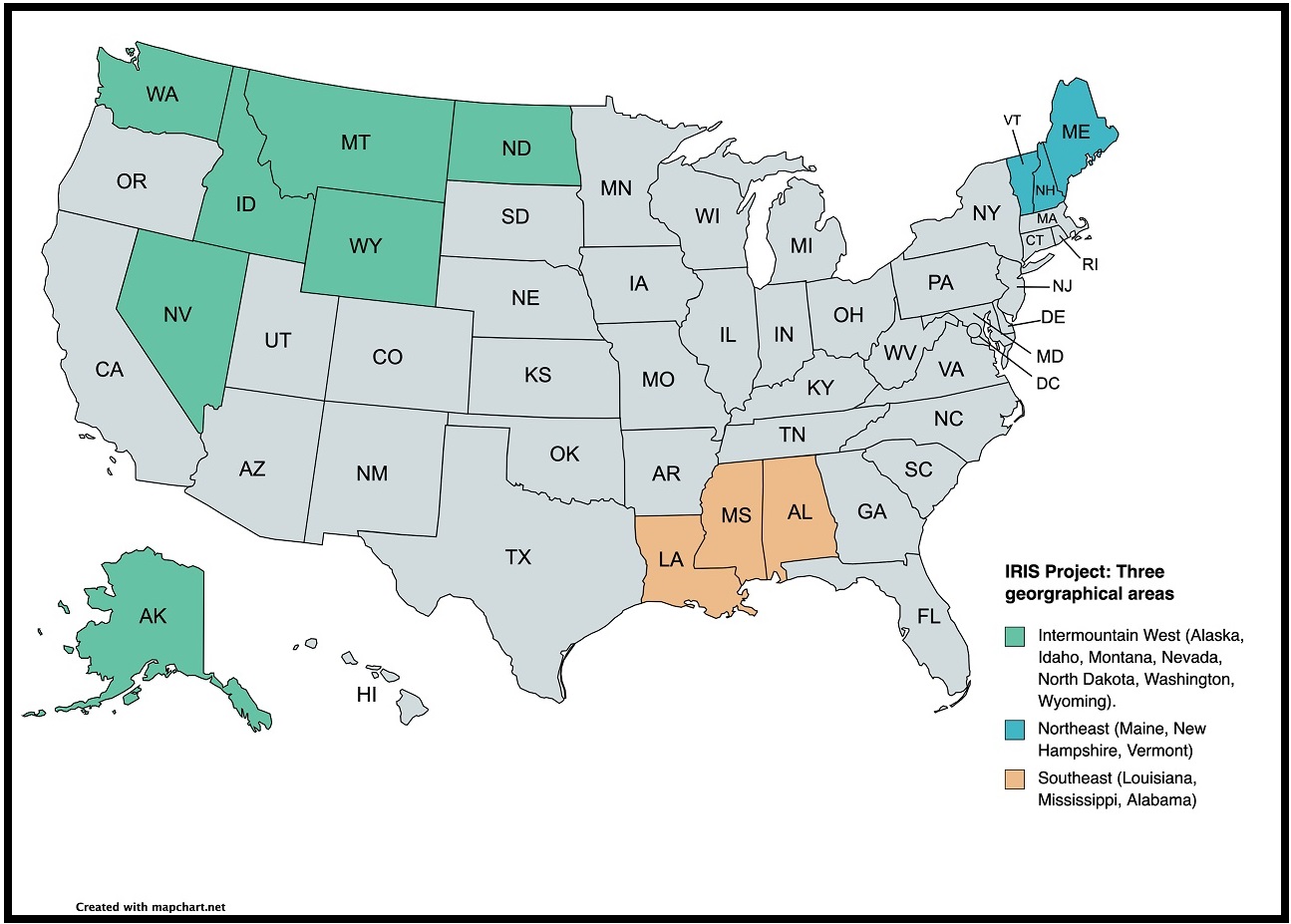As of September 30, 2025, this grant project
is no longer active.
This website will remain available as a resource.
IRIS Project Coordinator, Kelly Decker, presents an introduction to the IRIS Project in American Sign Language (ASL).
IRIS Project
The Improving Rural Interpreter Skills (IRIS) Project was a $2.25M, five-year interpreter training grant. This grant was awarded by the U.S. Department of Education, Rehabilitation Services Administration to the University of Northern Colorado's Department of American Sign Language & Interpreting Studies under the leadership of Dr. Leilani Johnson, Schawn Hardesty, and Kelly Decker. The funding was used between October 1, 2021, and September 30, 2025 (funding ended one year early).
IRIS's Vision
The IRIS Project increased the quantity and quality of interpreters working and living in rural settings by cultivating educational opportunities and sustainable connections that supported professional growth.
The vision of the IRIS Project in ASL by Valentino Ballentine.
In order to realize its vision, the IRIS Project:
- recognized that rural interpreters experience professional isolation with limited educational opportunities,
- upheld that the shared language of our space together is ASL,
- created the intentional space for rural interpreters to build an ethical support community,
- implemented communities of learning that had the shared experience of living and working in rural settings,
- required that diverse perspectives were intentionally sought to provide depth and balance to the learning experience and one's personal growth, and
- believed dialogic engagement via peer interaction was centered on exploration and discovery as a pathway to learning.
IRIS's Geographical Reach
The IRIS Project focused on improving the skills of 80 working interpreters and 20 mentor/facilitators in rural areas of the nation.
Though the project was national in scope, the IRIS Project focused its activities in three noncontiguous geographical areas:
- the northeast (Maine, New Hampshire, & Vermont),
- the southeast (Alabama, Louisiana, & Mississippi), and
- the intermountain west (Alaska, Idaho, Montana, Nevada, North Dakota, Washington, & Wyoming).

The WHY Behind the IRIS Project
These geographical areas were specifically targeted as they have limited training opportunities for individuals wishing to work as interpreters in community settings with Deaf, Hard of Hearing, and DeafBlind consumers. Individuals functioning as interpreters in these areas commonly lack the comprehensive knowledge and skill sets required to provide equal communication access. Generally overlooked by training entities and professional organizations, these interpreters are consequently unable to attain the necessary and appropriately sequenced training that recognizes existing competencies, accumulate academic credentials, or acquire professional certification to improve their services.
The Goals of the IRIS Project
The Improving Rural Interpreter Skills (IRIS) Project had three envisioned objectives for the grant period. In the following video, Decker shared the three goals of the IRIS Project in ASL.
GOAL 1
Design or modify ~300 hours of interpreting knowledge and skills training for a 1-year hybrid delivery system followed by a 6-month induction/mentorship experience.
Impact 80 interpreters working in rural areas.
GOAL 2
Design or modify ~120 hours of mentor/facilitator training for a 4-month hybrid delivery system.
Prepare 20 facilitators which represent a qualified pool of ASL and interpreting mentors to support IRIS students and other interpreters within their respective spheres of influence.
GOAL 3
Explore, define, and pilot systems that move demonstrated competencies toward academic credit and/or interpreting certification.
Share findings/results with:
- qualified working interpreters in rural areas
- interested interpreter education programs across the nation
The interpreters and facilitators were recruited using a snowball method of contact, due to the complexity of finding and connecting with this particularly hard-to-serve population of learners and mentors who will be admitted and utilized in this professional development project.
Timeline for Grant
Years 1-2
February - May 2022
~120 hours of IRIS facilitator and mentor training delivered to potential instructional team members
June 2022 - December 2023
Training delivered to selected IRIS: CORE Initiative participants (Cohort 1)
Years 2-3
June 2023 - December 2024
Training delivered to selected IRIS: CORE Initiative participants (Cohort 2)
Years 3-4
January - May 2024
~120 hours of facilitator and mentor training delivered to selected IRIS participants
June 2024 - September 2025
Training delivered to selected IRIS: CORE Initiative participants (Cohort 3)
Funding was not renewed for Year 5 (2026).











